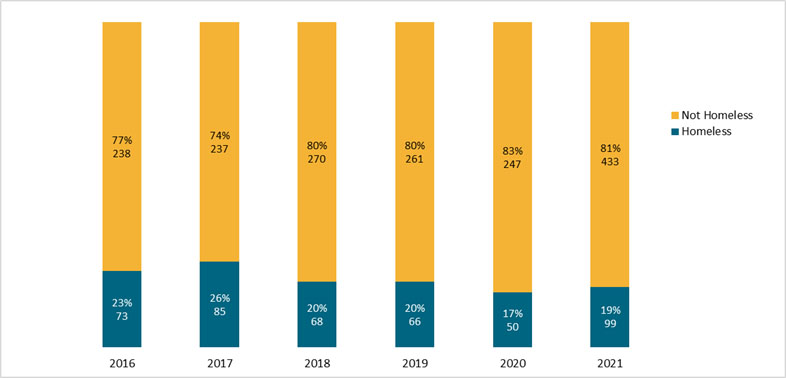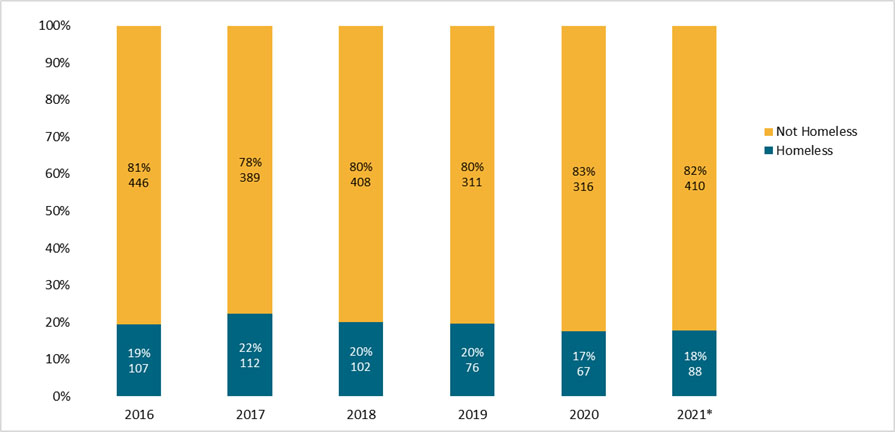Housing Instability
Housing instability is a balancing indicator for our outcomes related to creating successful transitions to adulthood. Youth and young adults who exit the foster care system without being placed into a permanent family through reunification, adoption, or guardianship are often referred to as "aging out" of foster care. These youth are at higher risk of becoming homeless or unstably housed than those who have a family to support them at this critical life transition. Across the past five years, within 12 months of leaving care, about 20% of former foster youth experienced an episode of housing instability or homelessness.
Analysis has also been done about the housing instability of youth and young adults (ages 12 to 25) who are released from a Juvenile Rehabilitation institution. From 2018-2022, the rates of homelessness for youth and young adults leaving Juvenile Rehabilitation institutions has mirrored those of former foster youth. Across the past five years, 18 percent experienced an episode of housing instability or homelessness within 12 months of discharge.


